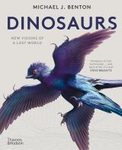About this book
Language: French
This volume contains three papers:
Taverne L. & Capasso L, 2014, Ostéologie et Phylogénie des Coccodontidae, une Famille Remarquable de Poissons Pycnodontiformes du Crétacé Supérieur Marin du Liban, avec la Description de Deux Nouveaux Genres. (43 textpages with 43 text-figures)
The Coccodontidae are an endemic and highly specialized pycnodontid fish family from the marine Cenomanian (Late Cretaceous) of Lebanon. Four genera are today ranged in this family, Coccodus, Hensodon, Trewavasia and Ichthyoceros. The present paper adds two new monospecific genera to the Coccodontidae, Paracoccodus gen. nov. and Corusichthys gen. nov. The osteology of all these fossil fishes is studied in details and the phylogeny within the family is established. Coccodus is the less evolved member of the family. It has a fusiform and naked body, very short dorsal and anal fins and less than 20 vertebral segments before the epichordal series. Its dermosupraoccipital develops a strong horn and a short nuchal process. Its cleithrum bears three long spines, one anterior and two posterior. However, its skull remains close to the usual pycnodontid cranial morphotype. Paracoccodus is only known by its head and the beginning of its vertebral axis. It has an occipital horn and a short nuchal process as in Coccodus but it differs from this last genus by some other cranial characters. Its skull is also fundamentally pycnodontid-shaped. Corusichthys, Hensodon and Trewavasia differ more markedly from the pycnodontid cranial scheme. They exhibit a vertically oriented snout, frontal horns and a gigantic nuchal process formed by the the dermosupraoccipital, the parietal and the supratemporal. They have lost the occipital horn. Corusichthys still possesses a fusiform body, less than 20 vertebral segments and short dorsal and anal fins. There is a spiny crest on the dermosupraoccipital and only one pair of scale-bars located in the pelvic region. Hensodon and Trewavasia are more specialized. They are deep-bodied. The frontal horns are horizontally oriented. A long crest runs through the dermopterotic. The premaxilla is partly hidden by the prefrontal. There are between 25 and 30 vertebral segments before the epichordal elements. The dorsal and anal fins are larger. The fin rays are segmented but not branched. One hypochordal is hypertrophied. A large spiny postcloacal scute is present. Hensodon is characterized by its atrophied jaws and the presence of a few scale-bars in the abdominal region. In Trewavasia, the frontal horns are flattened and sutured together, forming a bony visor before the orbit. The body is entirely covered by large spiny scutes. It is also shown that Ichthyoceros does not belong to the Coccodontidae but to the Gladiopycnodontidae, a family allied to the Coccodontidae and forming with them the super-family Coccodontoidea.
Taverne L. & Capasso L., 2014, Ostéologie et Relations Phylogénétiques des Gebrayelichtyidae (Halecostomi, Pycnodontomorpha), une Extraordinaire Famille de Poissons du Crétacé Supérieur Marin du Liban, avec la Description d’un Nouveau Genre. (24 textpages with 23 text-figures)
The Gebrayelichthyidae are an extraordinary fossil fish family endemic from the marine Cenomanian deposits of Lebanon. They are much deeper than long because of their short body and the presence of a very elongated nuchal horn and of a gigantic cleithrum forming a long ventral keel. Until now, the family was monogeneric and contained only the genus Gebrayelichthys with two species, G. uyenoi and G. vexillarius. A second gebrayelichthyid genus, Maraldichthys verticalis gen. and sp. nov. is herein described. The osteology of the two genera is studied in details. Their skull exhibits the typical pycnodontiform morphology, with a long and massive mesethmoid including the lateral ethmoids, a dermosupraoccipital, a long toothless parasphenoid, a dermohyomandibula associated to the hyomandibula, a reduced opercle, no subopercle and interopercle, a hypertrophied preopercle articulated with the dermohyomandibula, a premaxilla formed by a long shymphyseal branch, a toothless maxilla, no supramaxilla, a dentary reduced to its ventral branch, incisiform teeth on the jaws and no tesserae. They also possess a postcoelomic bone. Within the Pycnodontiformes, the Gebrayelichthyidae are closely allied to the Coccodontidae and the Gladiopycnodontidae and must be ranged with them in the super-family Coccodontoidea. The three families share several specialized characters, a fusiform body devoid of dorsal and ventral apex, a pectoral girdle intimately associated with the skull, forming a cephalo-thorax, a greatly hypertrophied cleithrum, a short anal fin basis and a short vertebral axis. Within the Coccodontoidea, the Gebrayelichthyidae are more particularly related to the Gladiopycnodontidae. The two families possess a long nuchal horn, the upper jaw outpacing the mandible level, a large posterior process on the cleithrum and scales on the whole body. The Coccodontidae do not show these last characters.
Taverne L., 2014, À Propos du Pycnodonte Paramesturus (Gyrodontidae) de l’Aptien Inférieur Marin d’Allemagne et de ses Relations Systématiques. (9 textpages with 4 text-figures)
The osteology of Paramesturus, a pycnodont fish from the marine Lower Aptian of Helgoland, Germany, is re-studied. The snout is short. There are two dermosupraoccipitals. The dentary has two branches. The premaxilla and the dentary bear styliform teeth. The parasphenoid is short and rectilinear. The vomerian teeth bear a marked cuspid. Some little bony plates (= tesserae) cover the gular region. These characters range Paramesturus within Gyrodontiformes. Other characters, such as the presence of differentiated infraorbitals, of a short and moderately broadened parachordal portion of the parasphenoid and of scales devoid of ganoin, separate Paramesturus from the Mesturidae and lead to include this fish in the Gyrodontidae. Within this family, Paramesturus differs from Gyrodus by its mesethmoid devoid of contact with the parasphenoid, by its parietal rejected from the posterior margin of the skull, by its complete infraorbital series and by its premaxilla bearing only one tooth.
Customer Reviews


































![Palaeofocus 5: Revision der Miozänen Molluskenfauna (Hemmoorium) von Werder bei Achim (Nordwest-Niedersachsen) [Revision of the Miocene Mollusc Fauna (Hemmoorian) of Werder near Achim (Northwest Lower Saxony)]](http://mediacdn.nhbs.com/jackets/jackets_resizer_medium/24/240142.jpg?height=150&width=107)




